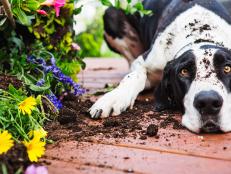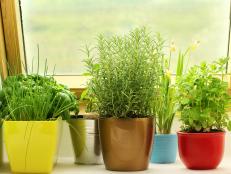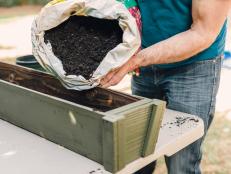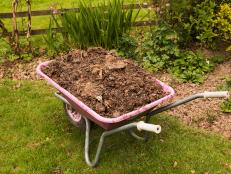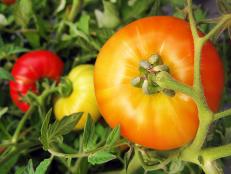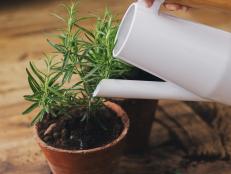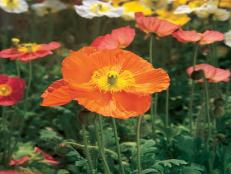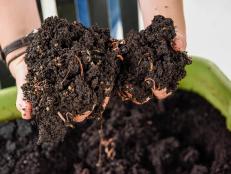Gardening Q & A: How Big a Deal Is Soil pH and more

Master gardener Paul James answers questions on a variety of gardening topics.
Q. How big a deal is soil pH?
A. It's a very big deal, especially if it's too low or too high. For example, most landscape plants, vegetables and fruits prefer a slightly acidic or near neutral soil pH, somewhere in the neighborhood of 6.8 to 7.2. When the soil pH drops below or rises above those levels, plants can suffer due to their inability to take up certain nutrients. Be careful—symptoms of pH imbalance can mimic other plant problems.
For example, in alkaline soils—those with a high pH—iron may not be available to the plant, and its leaves may begin to yellow. Too low of a pH may release toxic levels of manganese, which can also cause yellowing or browning of leaves. That's why it's a good idea to test your soil's pH once a year or so. Home test kits work pretty well and are cheap to use. Just make sure you sample several areas throughout your landscape as pH can vary from one place to the next.
To lower a soil's pH or make it more acidic, sulfur works well, whether applied to the soil surface or gently worked into the top six inches of soil. To raise a soil's pH or make it more alkaline, use lime. In both cases, before making an application, make sure you follow the package instructions. Finally, realize that certain fertilizers, notably synthetic forms that contain ammonium sulfate or ammonium nitrate, can lower pH, and those that contain potassium nitrate or calcium can raise pH.
Q. What's the difference between macro- and micronutrients?
A. Macronutrients include carbon, hydrogen and oxygen, which are derived from air and water, as well as nitrogen, phosphorous, potassium, calcium, sulfur and magnesium, which are absorbed from the soil. Micronutrients include boron, chlorine, copper, iron, manganese, molybdenum and zinc, and they too are absorbed from the soil.
Most synthetic fertilizers have only the so-called "big three" macronutrients in them—nitrogen, phosphorous and potassium—and ordinarily don't contain any of the micronutrients. Natural fertilizers tend to have a smaller percentage of the big three, but very often they contain some micronutrients, especially iron.
For proper growth, plants need macronutrients in relatively large quantities and micronutrients in extremely small quantities. There's one product that tends to have a nearly ideal mix of both macro- and micronutrients: compost.

Q. I once read that Miscanthus was sterile, but it's spreading in my garden. What gives?
A. The hugely popular ornamental grass Miscanthus, also called maiden grass, isn't sterile. In fact, they're borderline invasive in many gardens. James has noticed in his own landscape that those growing in his lawn have never reseeded, whereas those growing in more fertile garden beds have spread all over the place. Fortunately, the volunteer clumps are relatively easy to remove with a firm tug while they're still young. Another potentially invasive ornamental grass is Chasmanthium latifolium (figure A), better known as sea oats. Once volunteers of this grass get a foothold in the garden, they're difficult to remove without a fair amount of digging. You could, of course, remove the flower stalks as they appear to prevent the grasses from spreading, but the flower stalks are a key feature of grasses. Your only real recourse is to routinely pull up or dig out the volunteers as they appear.
Q. Is coir a substitute for peat?
A. For the most part, yes, but coir—which is a fiber extracted from coconuts—has a nearly neutral pH. Instead, peat has an acidic pH of 3.5 to 4.5, which is why it's often used to amend soils in support of acid-loving plants, such as azaleas and blueberries. Coir (figure B) also has some nutrient value, whereas peat (figure C) is essentially sterile. If you blend coir with a potting mix, realize that the plants you grow may not need as much fertilizer, especially one high in potassium. Those plants may not need as much water either because coir can absorb roughly 30 percent more water than peat.

Q. How damaging can it be to disturb tree roots?
A. It depends on the tree and how much damage you're talking about. Some tree roots are very sensitive to disturbance, while others aren't all that bothered by it. For example, most oaks, dogwoods, magnolias and pines are very sensitive to root disturbance. On the other hand, the roots of crabapples, ginkgos, honey locusts and pecans can withstand a fair amount of disturbance.
Regardless, you should try to minimize root disturbance when working at the base of trees. Also avoid causing any damage to the tree's trunk because these wounds can invite pests and diseases.
Q. I never can remember where to place my sprinkler for optimum coverage. Any ideas?
A. Order a pizza! Those little tables that come in pizza boxes are ideal for marking where to place your sprinkler. Just stab one in the ground, and you'll never have to search for that perfect spot again.






